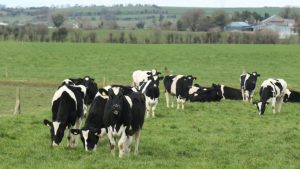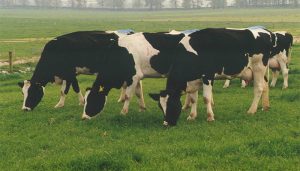
One major tack of the latest outbursts has been to contrast the righteousness of the environmental lobby case (not how they describe themselves, guardians of the universe is nearer the mark) for suppression of Irish agriculture, with the callous special interest of the farming community and even more so, the agri industry giants who stand most to gain etc.
My first response to this posturing would be to suggest that this group of delusional, but supposedly well intentioned souls, should better acquaint themselves with the huge body of actual scientific knowledge.
Knowledge which Teagasc – the Irish Food Development Authority – has developed in this highly complex area. Indeed a response from Teagasc to the broad allegation that science is unequivocally on the side of the suppression of Irish agri output, would be very welcome.
Carbon leakage from agri
This promotion of the need to supress Irish agricultural output usually starts with a statement that the concept of carbon leakage does not exist.
If the non existence of carbon leakage is a scientific fact, then the myriad reports by the likes of the World Food Organisation (FAO); the Organisation for Economic Co-operation and Development (OECD); United States Department of Agriculture (USDA) research; and EU Commission research, that the suppression of Irish and EU agricultural output will lead to greater global emissions are all wrong.
Very specifically the latest FAO/OECD world food outlook report demonstrates how milk production in India and Pakistan, countries whose emissions levels are up to 20 times greater than in dairy Ireland, are continuing to increase to meet increased demand as per the chart below.
So, one is tempted to ask – how much of the Amazon rainforest needs to be burnt down to facilitate increased beef production in Brazil before these promoters of non-science understand the complex dynamic between global heating and global food demand?
Demonising meat consumption
A second leg of this very wobbly stool has been the attempt to demonise consumption of meat and dairy products and to then suggest that the only thing keeping demand for Irish beef and dairy going, is promotion by Irish state agencies.
Again this is not factual. During Covid-19 lockdown, and throughout 2020 and 2021 when no promotion or travel was possible, demand for Irish meat and dairy products surged.
This was because the authentic response from global consumers to concerns about emissions from livestock and dairy production is to look for grass-based low-emitting sustainable production systems of ‘natural’ foodstuffs, rather than not consuming meat and dairy at all.
Indeed, nutritional science indicates that sustainable meat and dairy products are a healthier option for consumers than the vegan route, with its low nutritional content, and as pointed out in 2021 by the Food Safety Authority of Ireland (FSAI), quite a lot of highly processed foods in its offering.
Farmers are not fools
The final piece of non-science is the usual dismissiveness of the economic importance of the sector, coupled with a patronising statement that the farmers who have increased production didn’t know what they were at, the poor ‘craturs’.
The facts of the post-quota expansion of Irish dairy and meat production are as follows:
- In 1984, when Ireland had 1.5 million dairy cows, peaking at 1.6 million in 1986, EU milk quota production limits were imposed. Ireland was allocated 4.8 billion litres (note at this time New Zealand produced five billion litres and over the next 30 years increased to 20 billion litres);
- Since quotas were abolished by EU regulation in 2015, Irish milk production has increased from five billion to nine billion litres annually;
- Irish dairy cow numbers stand at 1.6 million, the same as in 1986;
- The average dairy herd size in Ireland is now 90 cows;
- In Northern Ireland, the average dairy herd size is 140, England – 170, Wales – 160, Scotland – 200 and New Zealand – 500.
I would suggest that the key impact of Irish dairy expansion has been the surge in Irish export values from €2 billion to €5 billion annually.
This is coupled with the increase in Irish economy expenditure from the dairy and beef sectors to over €7 billion annually according to the government’s Annual Survey of Irish Economy Expenditure 2020.
This has been a huge, unique and definitely irreplaceable boost to the national and regional Irish economy.
The attacks on Irish dairy and Irish agriculture, with their binary tribality, will continue to fail, as they are based on non-science. And, as importantly, with no sense of the economic impact of the sector and the 230,000 jobs that it supports nationwide.


























